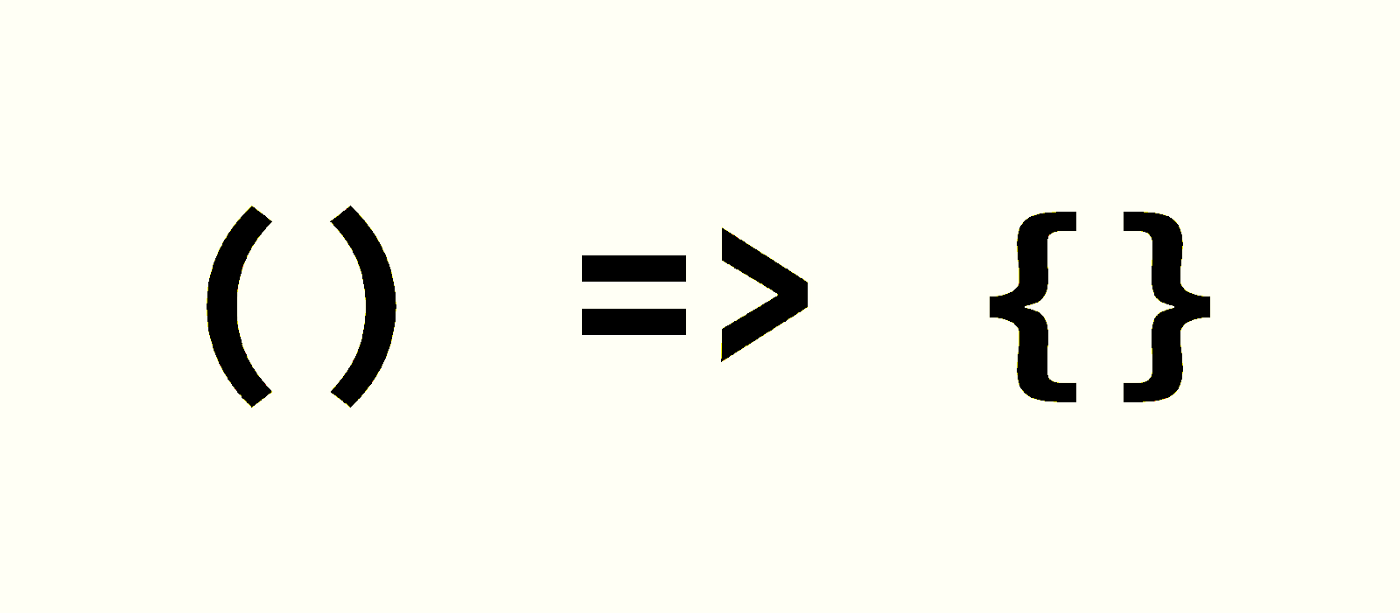# [Javascript] Arrow function 與一般匿名 function 對 this 的行為比較
# What is " this” ?

Javascript 在 ES6 之後迎來了一個新的 function 表示方法 — Arrow function。
其表示方式比起一般的 function 表示方式更為簡潔。我們可以使用以下撰寫形式表示以往的 function 行為。
(arg1, arg2, ...) => { /* code here */ }
當 Arrow function 的 argument 只有一個時我們可以省略 () ,當內容指有一項,並且要作為回傳時,我們甚至可以省略 {} 。綜合以上所述,我們在簡化為如下的表示。
arg1 => somethingCodeNeedReturn();
在許多的網站中,不時有看到一些介紹 Arrow function 的文章講解就類似上述所言: 我們可以將一般 function 改寫成 Arrow function 、 Arrow function 是一般 function 的一種簡化表示方式 。
# 然而,真如此單純嗎?
如果這麼單純,我也不用寫這篇文章了。
其實,查詢一下 MDN 上關於 Arrow function 的描述便可以知道了,這兩者其實存在著很多的差異,之所以沒有感覺,可能純粹只是 運.氣.好 。
還沒有踩到坑啊!

從這段話可以理解 Arrow function 本身沒有 this 、 super 、 arguments … 等 一般 function 擁有的屬性。而今天要探討的 this 不同於 一般 function this 值取決於被呼叫的函式來決定 ; Arrow function 則是 在定義時便綁定到對象的物件上 ( 我們可以理解為 Arrow function 的 this 跟隨其物件的 this )。
我們來看一些例子可能會更清楚
在 Global 的行為


在 Global 中基本上並無差異,原因是不論是一般 function 還是 Arrow function 都該綁定到 Window,這很好理解。
在 Object 的行為
接下來從 Object 開始便有所差異了。
var obj = { | |
methodA_normal: function() { | |
// Object | |
console.log("[ normal function ]", this.constructor.name); | |
setTimeout(function() { | |
// Window | |
console.log("[ normal function <in timeout> normal function ]", this.constructor.name) | |
}, 1); | |
}, | |
methodA_arrow: () => { | |
// Window | |
console.log("[ arrow function ]", this.constructor.name); | |
setTimeout(() => { | |
// Window | |
console.log("[ arrow function <in timeout> arrow function ]", this.constructor.name) | |
}, 1); | |
}, | |
methodA_normal_with_arrow_timeout: function() { | |
// Object | |
console.log("[ normal function ]", this.constructor.name); | |
setTimeout(() => { | |
// Object | |
console.log("[ arrow function <in timeout> normal function ]", this.constructor.name) | |
}, 1); | |
}, | |
methodA_arrow_with_normal_timeout: () => { | |
// Window | |
console.log("[ arrow function ]", this.constructor.name); | |
setTimeout(function() { | |
// Window | |
console.log("[ normal function <in timeout> arrow function ]", this.constructor.name) | |
}, 1); | |
}, | |
} |

這是執行 methodA_normal 的結果

這是執行 methodA_arrow 的結果

這是執行 methodA_normal_with_arrow_timeout 的結果

這是執行 methodA_arrow_with_normal_timeout 的結果
從上面的例子我們可以理出一些端倪,Arrow function 中的 this 在定義時,會向外尋找掛載組件的 this 直到找到 global 為止。而一般 function 中的 this 則在使用時,視使用對象而獲得不同的 this
因此,在 methodA_normal 的 setTimeout 中的 function 才會得到 window 而 methodA_normal_with_arrow_timeout 中的 Arrow function 則是獲得 Object 。
Class 生成的物件行為
class A { | |
constructor() { | |
this.methodA_arrow = () => { | |
// A | |
console.log("[ arrow function ]", this.constructor.name); | |
setTimeout(() => { | |
// A | |
console.log("[ arrow function <in timeout> arrow function ]", this.constructor.name) | |
}, 1); | |
}; | |
this.methodA_arrow_with_normal_timeout = () => { | |
// A | |
console.log("[ arrow function ]", this.constructor.name); | |
setTimeout(function() { | |
// Window | |
console.log("[ normal function <in timeout> arrow function ]", this.constructor.name) | |
}, 1); | |
}; | |
} | |
methodA_normal() { | |
// A | |
console.log("[ normal function ]", this.constructor.name); | |
setTimeout(function() { | |
// Window | |
console.log("[ normal function <in timeout> normal function ]", this.constructor.name) | |
}, 1); | |
} | |
methodA_normal_with_arrow_timeout() { | |
// A | |
console.log("[ normal function ]", this.constructor.name); | |
setTimeout(() => { | |
// A | |
console.log("[ arrow function <in timeout> normal function ]", this.constructor.name) | |
}, 1); | |
} | |
} |
我們利用上方的 Class A new 一個 a 物件來做為測試。
var a = new A();

這是執行 methodA_arrow 的結果

這是執行 methodA_arrow_with_normal_timeout 的結果

這是執行 methodA_normal 的結果

這是執行 methodA_normal_with_arrow_timeout 的結果
測試至此,依照上方的運作原理,其結果也就不言而喻了。
# 總結
之所以會有契機要記錄這篇文章,所有的起因皆為某天與同事們聊到 Nuxt 具有記憶體洩漏 (Memory leak) 的問題。
在查詢相關文獻時,發現了這篇文章找出問題的根源並且修正。
NUXT 内存泄漏引发问题
其中作者發現的問題為 Nuxt 在 Request 的 Closure 中,由於 從頭到尾使用 Arrow function , 然而 Arrow function 並沒有被綁定在任何物件上 (也就是說 Arrow function 最終綁定在 window 上) ,導致 NodeJs 無法正確地清理無用的資源,最終造成 Nuxt Memory Leak。
而作者的解決方式也很單純:將 arrow function 改為一般 function 寫法,便搞定了。
這不禁讓我反思
如果是我,是否找得出這個 Bug?
若是 沒有清楚地明瞭 Arrow function 與一般 function 的差異,我們可能真的就把 Arrow function 當成一般 function 來理解,然後就忽視了這個地方,最終當然什麼 Bug 也沒解掉。
因此,趁著這次機會,將 Arrow function 與一般 function 的比較記錄下來,以便未來需要時可以快速複習。

